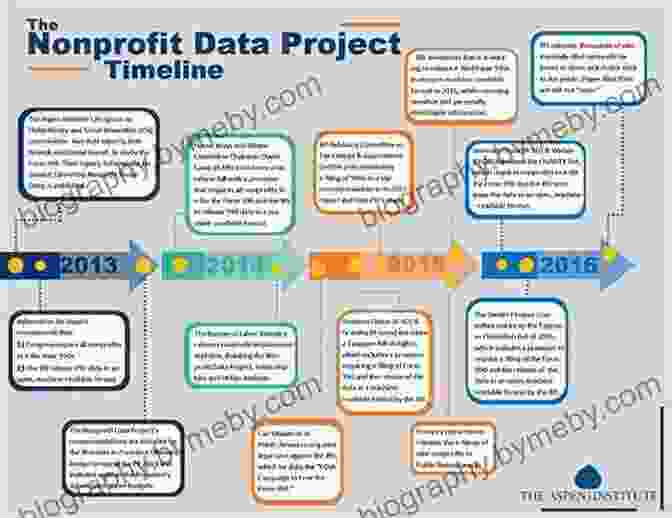The Nature of the Nonprofit Sector: A Comprehensive Guide

The nonprofit sector is a vast and complex landscape, playing a crucial role in the fabric of our societies. From healthcare and education to environmental protection and social welfare, nonprofit organizations touch every aspect of our lives. Yet, despite their profound impact, the nature of the sector remains often misunderstood.
5 out of 5
| Language | : | English |
| File size | : | 3761 KB |
| Text-to-Speech | : | Enabled |
| Screen Reader | : | Supported |
| Enhanced typesetting | : | Enabled |
| Word Wise | : | Enabled |
| Print length | : | 606 pages |
In this comprehensive guidebook, we embark on a journey to explore the multifaceted nature of the nonprofit sector. We will delve into its historical roots, examine its unique characteristics, and dissect the challenges and opportunities it faces in the modern era.
Historical Roots and Evolution

The origins of the nonprofit sector can be traced back to ancient civilizations, where charitable activities were often organized through religious institutions or community groups. In the Middle Ages, guilds and trade associations emerged as precursors to modern nonprofits, providing mutual aid and support to their members.
The Industrial Revolution and the rise of urbanization in the 19th century witnessed a surge in the formation of nonprofit organizations. These organizations played a vital role in addressing the social challenges of the time, such as poverty, disease, and crime.
Defining Characteristics
- Mission-Driven: Nonprofit organizations are established with a specific mission or purpose that benefits society. Their activities are guided by this mission, rather than profit-maximization.
- Tax-Exempt: Most nonprofit organizations are granted tax-exempt status by the government. This enables them to receive donations and operate without paying taxes on their income.
- Public Benefit: Nonprofit organizations are required to demonstrate that their activities provide a public benefit. This can include providing services, education, or advocacy for a particular cause.
- Independent: Nonprofit organizations are independent of government and corporate control. They are governed by a board of directors who are responsible for overseeing their operations and ensuring they meet their mission.
Types of Nonprofit Organizations
The nonprofit sector encompasses a diverse range of organizations, each with its own unique focus and objectives. Some common types of nonprofits include:
- Charities: Focus on providing direct services to individuals in need, such as food, shelter, and medical care.
- Foundations: Provide financial support to other nonprofit organizations or individuals working on a specific cause.
- Advocacy Groups: Engage in lobbying and public awareness campaigns to promote social or environmental change.
- Service Organizations: Provide services that benefit the community, such as education, healthcare, and community development.
- Religious Organizations: Engage in religious activities and provide spiritual and social services to their members.
Challenges and Opportunities
The nonprofit sector faces a number of challenges in the modern era, including:
- Funding Constraints: Nonprofits rely heavily on donations and grants, which can be volatile and unpredictable.
- Competition: Nonprofit organizations compete with both for-profit businesses and other nonprofits for resources and support.
- Regulation: Nonprofit organizations are subject to a complex web of regulations that can be costly and burdensome.
- Public Trust: Nonprofit organizations must maintain public trust in Free Download to attract donations and support.
Despite these challenges, the nonprofit sector also presents numerous opportunities for impact and social change:
- Social Innovation: Nonprofit organizations are often at the forefront of social innovation, developing new and creative solutions to social problems.
- Community Building: Nonprofit organizations play a vital role in building community and bridging social divides.
- Economic Development: Nonprofit organizations can contribute to economic development by creating jobs, stimulating investment, and promoting innovation.
- Advocacy: Nonprofit organizations can provide a powerful voice for the marginalized and advocate for social and environmental change.
The nonprofit sector is a complex and multifaceted landscape that plays a pivotal role in our societies. Its historical roots, unique characteristics, and diverse range of organizations reflect the ever-evolving needs of society. While the sector faces challenges, it also presents immense opportunities for social impact and positive transformation.
This comprehensive guide has provided a foundation for understanding the nature of the nonprofit sector. By continuing to explore and support nonprofit organizations, we can harness their potential to create a more just, equitable, and sustainable world.
5 out of 5
| Language | : | English |
| File size | : | 3761 KB |
| Text-to-Speech | : | Enabled |
| Screen Reader | : | Supported |
| Enhanced typesetting | : | Enabled |
| Word Wise | : | Enabled |
| Print length | : | 606 pages |
Do you want to contribute by writing guest posts on this blog?
Please contact us and send us a resume of previous articles that you have written.
 Book
Book Novel
Novel Page
Page Chapter
Chapter Text
Text Story
Story Genre
Genre Reader
Reader Library
Library Paperback
Paperback E-book
E-book Magazine
Magazine Newspaper
Newspaper Paragraph
Paragraph Sentence
Sentence Bookmark
Bookmark Shelf
Shelf Glossary
Glossary Bibliography
Bibliography Foreword
Foreword Preface
Preface Synopsis
Synopsis Annotation
Annotation Footnote
Footnote Manuscript
Manuscript Scroll
Scroll Codex
Codex Tome
Tome Bestseller
Bestseller Classics
Classics Library card
Library card Narrative
Narrative Biography
Biography Autobiography
Autobiography Memoir
Memoir Reference
Reference Encyclopedia
Encyclopedia Annette Marie
Annette Marie Anne Mctiernan
Anne Mctiernan Antonia Fraser
Antonia Fraser Arlene Blum
Arlene Blum Patricia Romanowski Bashe
Patricia Romanowski Bashe Neva Sullaway
Neva Sullaway Anne Toole
Anne Toole Thomas Herold
Thomas Herold Arnold Ytreeide
Arnold Ytreeide Anthony Debarros
Anthony Debarros Arisa White
Arisa White Samuel Greenberg
Samuel Greenberg Tom Chatfield
Tom Chatfield Ben G Frank
Ben G Frank Jason L Riley
Jason L Riley Kolbie Blume
Kolbie Blume Burne Hogarth
Burne Hogarth Annette Smith
Annette Smith Vernon Trafford
Vernon Trafford Jeff Davis
Jeff Davis
Light bulbAdvertise smarter! Our strategic ad space ensures maximum exposure. Reserve your spot today!

 James GrayAce the New York State Driver License Test: Your Comprehensive Study Guide to...
James GrayAce the New York State Driver License Test: Your Comprehensive Study Guide to... Hudson HayesFollow ·11.6k
Hudson HayesFollow ·11.6k Jamal BlairFollow ·16.5k
Jamal BlairFollow ·16.5k Joel MitchellFollow ·12.9k
Joel MitchellFollow ·12.9k F. Scott FitzgeraldFollow ·9.8k
F. Scott FitzgeraldFollow ·9.8k Allen ParkerFollow ·4.8k
Allen ParkerFollow ·4.8k Jamie BellFollow ·12.9k
Jamie BellFollow ·12.9k Anton ChekhovFollow ·4.6k
Anton ChekhovFollow ·4.6k Spencer PowellFollow ·11.5k
Spencer PowellFollow ·11.5k

 Juan Rulfo
Juan RulfoThe Easy Ingredient Ketogenic Diet Cookbook: Your...
Embark on a culinary adventure that...

 Zachary Cox
Zachary CoxDepression Hates a Moving Target: A Groundbreaking...
Depression...

 Colin Richardson
Colin RichardsonUnleash Your Spine-Tingling Curiosity: Dive into the...
In the realm of...

 Evan Hayes
Evan HayesMarketing Fashion Portfolio: The Ultimate Guide to...
In the competitive world of fashion, it is...
5 out of 5
| Language | : | English |
| File size | : | 3761 KB |
| Text-to-Speech | : | Enabled |
| Screen Reader | : | Supported |
| Enhanced typesetting | : | Enabled |
| Word Wise | : | Enabled |
| Print length | : | 606 pages |














